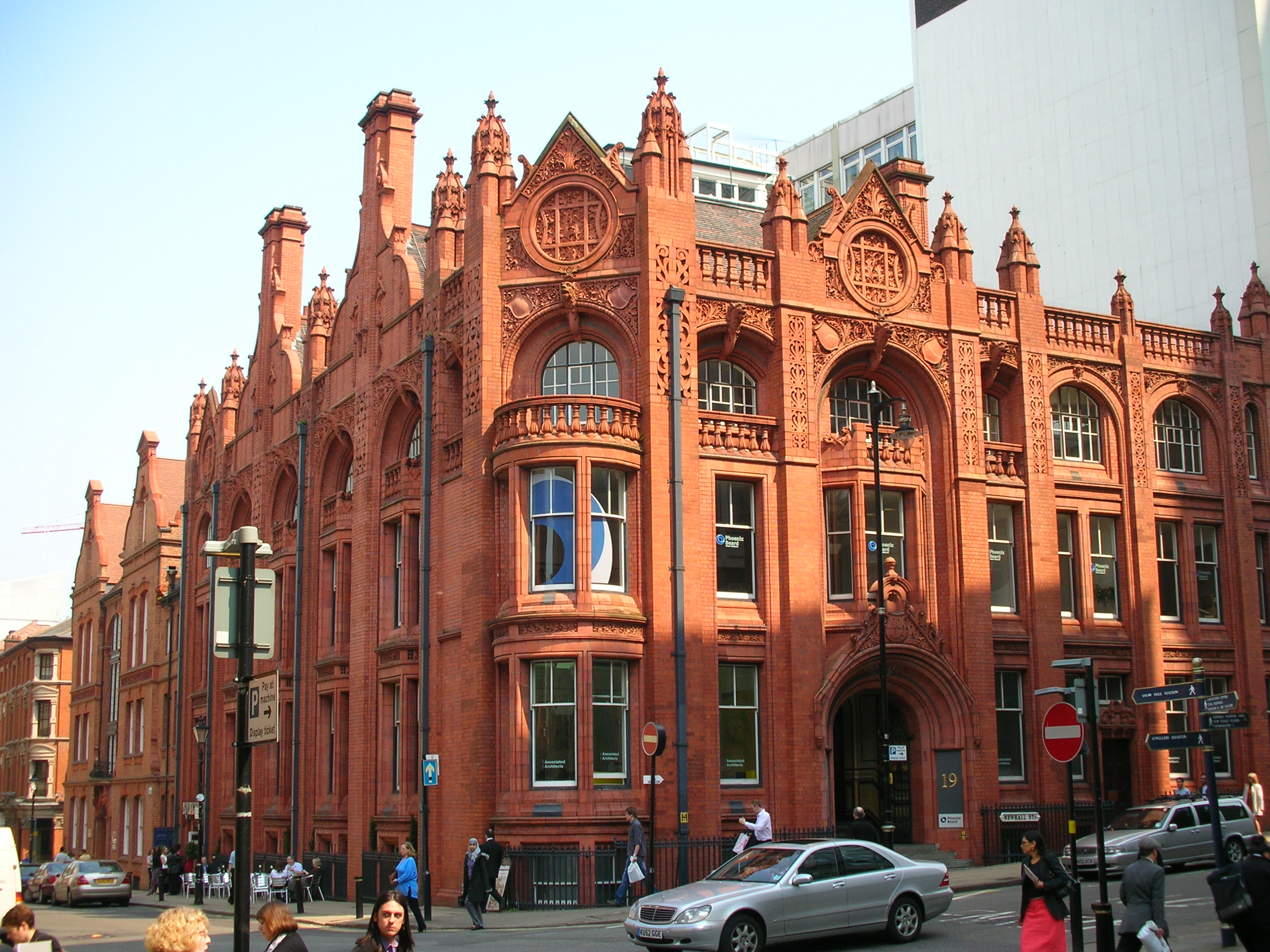|
Terra Cotta (other)
Terra Cotta (or terracotta) is a clay-based ceramic material, and objects made in it. Terra Cotta or terracotta may also refer to: Places *Terra Cotta, California, a small former mining town in the USA *Terra Cotta, Illinois, an unincorporated community in the USA *Terra Cotta, a community in Caledon, Ontario, Canada *Terra Cotta, a 1990s heavy metal band from Cambridge, Ontario, Canada Other uses *Terra cotta (color), a reddish-brown colour *Terracotta, Inc., a software company See also *Terracotta Army, ancient Chinese funerary warrior and horse statues *Architectural terracotta *Glazed architectural terra-cotta Glazed architectural terra cotta is a ceramic masonry building material used as a decorative skin. It was popular in the United States from the late 19th century until the 1930s, and is still one of the most common building materials found in U ... * Terracotta roof tiles {{disambig ... [...More Info...] [...Related Items...] OR: [Wikipedia] [Google] [Baidu] |
Terra Cotta
Terracotta, terra cotta, or terra-cotta (; ; ), in its material sense as an earthenware substrate, is a clay-based unglazed or glazed ceramic where the fired body is porous. In applied art, craft, construction, and architecture, terracotta is the term normally used for sculpture made in earthenware and also for various practical uses, including vessels (notably flower pots), water and waste water pipes, roofing tiles, bricks, and surface embellishment in building construction. The term is also used to refer to the natural brownish orange color of most terracotta. In archaeology and art history, "terracotta" is often used to describe objects such as figurines not made on a potter's wheel. Vessels and other objects that are or might be made on a wheel from the same material are called earthenware pottery; the choice of term depends on the type of object rather than the material or firing technique. Unglazed pieces, and those made for building construction and industr ... [...More Info...] [...Related Items...] OR: [Wikipedia] [Google] [Baidu] |
Terra Cotta, California
Terra Cotta is a former mining town in Riverside County. It was established in 1887, in the Warm Springs Valley northwest of the town of Lake Elsinore, and later incorporated into the City of Lake Elsinore. Coal, along with clay deposits, was found on the site by John D. Huff in the late 1880s, and the Southern California Coal and Clay Company was formed to mine them. The town site of Terra Cotta was laid out and was given a post office on October 26, 1887. However, in May 1893, its post office was closed and moved to Lake Elsinore. A plant for the manufacture of sewer and water pipes was built using the coal to fire ceramic pipes in the four kilns. The finished product had to be shipped by wagon six miles through Lake Elsinore to the La Laguna rail station at the mouth of Railroad Canyon until 1896, when a spur line was built through Lake Elsinore and Terra Cotta to the new clay deposits in Alberhill. The coal mined was also used locally as fuel for the stamping mill at the Go ... [...More Info...] [...Related Items...] OR: [Wikipedia] [Google] [Baidu] |
Terra Cotta, Illinois
Terra Cotta is an unincorporated community in McHenry County, in the U.S. state of Illinois. History A post office called Terra Cotta was established in 1886, and remained in operation until it was discontinued in 1927. The community was named after a local terracotta Terracotta, terra cotta, or terra-cotta (; ; ), in its material sense as an earthenware substrate, is a clay-based unglazed or glazed ceramic where the fired body is porous. In applied art, craft, construction, and architecture, terracotta i ... pottery works. References Unincorporated communities in McHenry County, Illinois Unincorporated communities in Illinois {{McHenryCountyIL-geo-stub ... [...More Info...] [...Related Items...] OR: [Wikipedia] [Google] [Baidu] |
Caledon, Ontario
Caledon (; 2021 population 76,581) is a town in the Regional Municipality of Peel in the Greater Toronto Area of Ontario, Canada. From a shortened form of Caledonia, the Roman name for North Britain; Caledon is a developing urban area, although it remains primarily rural. It consists of an amalgamation of a number of urban areas, villages, and hamlets; its major urban centre is Bolton on its eastern side adjacent to York Region. Caledon is one of three municipalities of Peel Region. The town is at the northwest border of the city of Brampton. At over , Caledon is the largest municipality, by area, in the Greater Toronto Area. History By 1869, Belfountain was a Village with a population of 100 in the Township of Caledon County Peel. It was established on the Credit River. There were stagecoaches to Erin and Georgetown. The average price of land was $20. In 1973, Caledon acquired more territory when Chinguacousy dissolved, with most sections north of Mayfield Road (exclud ... [...More Info...] [...Related Items...] OR: [Wikipedia] [Google] [Baidu] |
Heavy Metal Music
Heavy metal (or simply metal) is a genre of rock music that developed in the late 1960s and early 1970s, largely in the United Kingdom and United States. With roots in blues rock, psychedelic rock and acid rock, heavy metal bands developed a thick, monumental sound characterized by distorted guitars, extended guitar solos, emphatic beats and loudness. In 1968, three of the genre's most famous pioneers – Led Zeppelin, Black Sabbath and Deep Purple – were founded. Though they came to attract wide audiences, they were often derided by critics. Several American bands modified heavy metal into more accessible forms during the 1970s: the raw, sleazy sound and shock rock of Alice Cooper and Kiss; the blues-rooted rock of Aerosmith; and the flashy guitar leads and party rock of Van Halen. During the mid-1970s, Judas Priest helped spur the genre's evolution by discarding much of its blues influence,Walser (1993), p. 6 while Motörhead introduced a punk rock sensibilit ... [...More Info...] [...Related Items...] OR: [Wikipedia] [Google] [Baidu] |
Cambridge, Ontario
Cambridge is a city in the Regional Municipality of Waterloo, Ontario, Canada, located at the confluence of the Grand and Speed rivers. The city had a population of 138,479 as of the 2021 census. Along with Kitchener and Waterloo, Cambridge is one of the three core cities of Canada's tenth-largest metropolitan area. Cambridge was formed in 1973 by the amalgamation of Galt, Preston, Hespeler, the settlement of Blair and a small portion of surrounding townships. The former Galt covers the largest portion of Cambridge, making up the southern half of the city, while Preston and Blair cover the western side. Hespeler makes up the most northeastern section of Cambridge. Historical information and records of each entity are well documented in the Cambridge City Archives. History History of the City of Galt Galt is situated on land once granted to the Iroquois people by the British Crown at the end of the American Revolutionary War. In the late 1700s, developers began to buy ... [...More Info...] [...Related Items...] OR: [Wikipedia] [Google] [Baidu] |
Terra Cotta (color)
Salmon is a range of pinkish-orange to light pink colors, named after the color of salmon flesh. The first recorded use of ''salmon'' as a color name in English was in 1776.Maerz and Paul ''A Dictionary of Color'' New York:1930 McGraw-Hill Page 203; Color Sample of Salmon: Page 43 Plate 10 Color Sample A7 The actual color of salmon flesh varies from almost white to light orange, depending on their levels of the carotenoid astaxanthin due to how rich a diet of krill and shrimp the fish feeds on; salmon raised on fish farms are given non-synthetic or artificial coloring in their food. __TOC__ Variations of salmon Light salmon resembles the color salmon, but is lighter, not to be confused with dark salmon, which resembles salmon pink but is darker. Salmon pink (or ''salmon'' in Crayola crayons) was introduced by Crayola in 1949. See the List of Crayola crayon colors. Dark salmon resembles the color salmon, but is darker. Like the web colors ''light salmon'' and ''salm ... [...More Info...] [...Related Items...] OR: [Wikipedia] [Google] [Baidu] |
Terracotta Army
The Terracotta Army is a collection of terracotta sculptures depicting the armies of Qin Shi Huang, the first emperor of China. It is a form of funerary art buried with the emperor in 210–209 BCE with the purpose of protecting the emperor in his afterlife. The figures, dating from approximately the late third century BCE, were discovered in 1974 by local farmers in Lintong County, outside Xi'an, Shaanxi, China. The figures vary in height according to their roles, the tallest being the generals. The figures include warriors, chariots and horses. Estimates from 2007 were that the three pits containing the Terracotta Army held more than 8,000 soldiers, 130 chariots with 520 horses, and 150 cavalry horses, the majority of which remained buried in the pits near Qin Shi Huang's mausoleum. Other terracotta non-military figures were found in other pits, including officials, acrobats, strongmen, and musicians. History The construction of the tomb was described by historian S ... [...More Info...] [...Related Items...] OR: [Wikipedia] [Google] [Baidu] |
Architectural Terracotta
Architectural terracotta refers to a fired mixture of clay and water that can be used in a non-structural, semi-structural, or structural capacity on the exterior or interior of a building. Terracotta pottery, as earthenware is called when not used for vessels, is an ancient building material that translates from Latin as " baked earth". Some architectural terracotta is actually the stronger stoneware. It can be unglazed, painted, slip glazed, or glazed. A piece of terracotta is composed of a hollow clay web enclosing a void space or cell. The cell can be installed in compression with mortar or hung with metal anchors. All cells are partially backfilled with mortar. By the late 19th century the version with a ceramic glaze, namely glazed architectural terracotta became more popular. Chemistry Terracotta is made of a clay or silt matrix, a fluxing agent, and grog or bits of previously fired clay. Clays are the remnants of weathered rocks that are smaller than 2 microns. The ... [...More Info...] [...Related Items...] OR: [Wikipedia] [Google] [Baidu] |
Glazed Architectural Terra-cotta
Glazed architectural terra cotta is a ceramic masonry building material used as a decorative skin. It was popular in the United States from the late 19th century until the 1930s, and is still one of the most common building materials found in U.S. urban environments. It is the glazed version of architectural terracotta; the material in both its glazed and unglazed versions is sturdy and relatively inexpensive, and can be molded into richly ornamented detail. Glazed terra-cotta played a significant role in architectural styles such as the Chicago School and Beaux-Arts architecture. History The material, also known in Great Britain as faience and sometimes referred to as "architectural ceramics", was closely associated with the work of Cass Gilbert, Louis Sullivan, and Daniel H. Burnham, among other architects. Buildings incorporating glazed terra-cotta include the Woolworth Building in New York City and the Wrigley Building in Chicago. Glazed architectural terra-cotta off ... [...More Info...] [...Related Items...] OR: [Wikipedia] [Google] [Baidu] |
.jpg)





